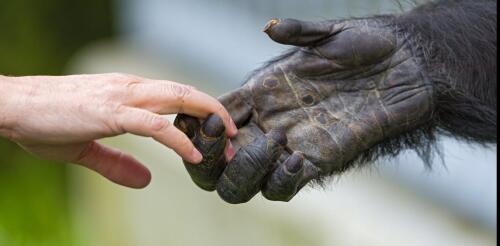Infectious diseases
When the World Health Organization declared COVID-19 a pandemic on March 11, 2020, humans had been the only species with reported cases of the disease. While early genetic analyses pointed to horseshoe bats as the evolutionary hosts of SARS-CoV-2, the virus that causes COVID-19, no reports had yet surfaced indicating it could be transmitted from humans to other animal species. Less than two weeks later, a report from Belgium marked the first infection in a domestic cat – presumably by its owner. Summer 2020 saw news of COVID-19 outbreaks and subsequent cullings in mink farms across Europe and fears of similar calls for culling in North America. Humans and other animals on and around mink farms tested positive, raising questions about the potential for a secondary wildlife reservoir of COVID-19. That is, the virus could infect and establish a transmission cycle in a different species than the one in which it originated. Researchers have documented this phenomenon of human-...
Aedes aegypti mosquitoes, one of the most common species in the U.S., love everything about humans. They love our body heat and odors, which enable them to find us. They love to feed on our blood to make their eggs mature. They even love all the standing water that we create. Uncovered containers, old tires and junk piles collect water and are perfect for breeding. And with the advent of warm weather across the southern U.S., mosquito breeding season is already underway. Given all the options that Aedes females have in urban areas, how do these cosmopolitan mosquitoes find the perfect site to lay their eggs? Scientists previously thought this was a solitary act, but now research shows that female Aedes aegypti mosquitoes – the main vector in the U.S. for diseases such as Zika, dengue, chikungunya and other viruses – can rely on one another for good reviews of breeding sites. Our Laboratory of Tropical Genetics at Florida International University discovered a new b...
Flesh-eating bacteria sounds like the premise of a bad horror movie, but it’s a growing – and potentially fatal – threat to people. In September 2023, the Centers for Disease Control and Prevention issued a health advisory alerting doctors and public health officials of an increase in flesh-eating bacteria cases that can cause serious wound infections. I’m a professor at the Indiana University School of Medicine, where my laboratory studies microbiology and infectious disease. Here’s why the CDC is so concerned about this deadly infection – and ways to avoid contracting it. What does ‘flesh-eating’ mean? There are several types of bacteria that can infect open wounds and cause a rare condition called necrotizing fasciitis. These bacteria do not merely damage the surface of the skin – they release toxins that destroy the underlying tissue, including muscles, nerves and blood vessels. Once the bacteria reach the bloodstream,...
An outbreak of highly pathogenic avian influenza has spread through chicken and turkey flocks in 46 states since it was first detected in Indiana on Feb. 8, 2022. The outbreak is also taking a heavy toll in Canada and Europe. Better known as bird flu, avian influenza is a family of highly contagious viruses that are not typically harmful to most wild birds that transmit it, but are deadly to domesticated birds. The virus spreads quickly through poultry flocks and almost always causes severe disease or death, so when it is detected, officials quarantine the site and cull all the birds in the infected flock. As of early November, this outbreak had led to the culling of over 50 million birds from Maine to Oregon, driving up prices for eggs and poultry – including holiday turkeys. This matches the toll from a 2014-2015 bird flu outbreak that previously was considered the most significant animal disease event in U.S. history. Yuko Sato, an associate professor of veterinary me...



